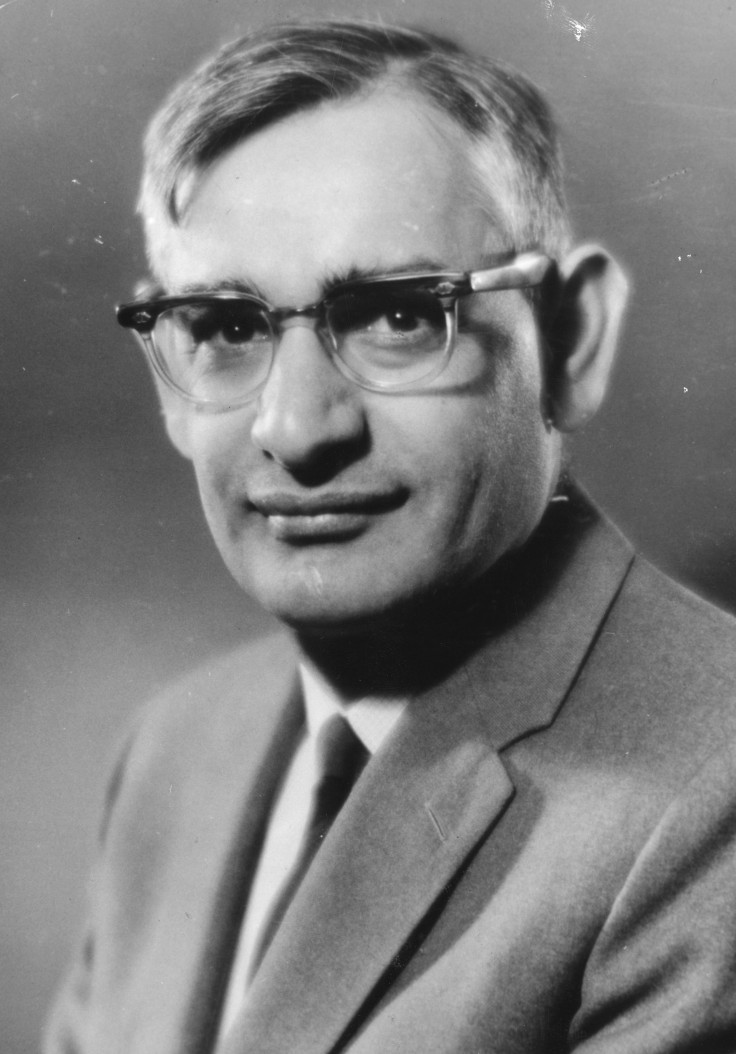Who Was Har Gobind Khorana? Google Doodle Honors Nobel Prize Winner

Nobel Prize winner Har Gobind Khorana, an Indian-American biochemist who was credited with discovery of essential function of the DNA and construction of the first synthetic gene, was honored by Google in form of a doodle on Tuesday.
The doodle was meant to celebrate the 96th birthday of the biochemist. Although Khorana’s exact date of birth is not known, the Nobel Prize website lists it as Jan. 9, 1922.
Khorana was born to Hindu parents in Raipur, a little village in Punjab, currently a part of eastern Pakistan. His father, who was a village agricultural taxation clerk in the then colonial India, taught Khorana how to read and write during his childhood, India Today reported.
We paid tributes to noble laureate Dr. Har Govind Khorana on his birthday and remembering his contribution in medical science .#hargobindkhorana pic.twitter.com/w8mR8xlb4Z
— NSS IIT Hyderabad (@nss_iith) January 9, 2018
Khorana attended the D.A.V. High School in Multan, Pakistan, and went on to obtain a Masters’ degree from the Punjab University in Lahore. After being awarded with the Government of India Fellowship in 1945, Khorana went to England for a PhD degree at the University of Liverpool.
After completing a year of research on nucleic acids and proteins, while he was working under Professor Vladimir Prelog in Zurich, Switzerland, Khorana moved to Canada in 1952 where he worked at the University of British Columbia. During the same time, he began working on genetic research, which would go on to win the Nobel Prize years later.
In 1960, Khorana moved to the Institute for Enzyme Research at the University of Wisconsin. He became an American citizen in 1966 and till 1970, served as Alfred P. Sloan Professor of Biology and Chemistry at the Massachusetts Institute of Technology.
Khorana married Swiss national Esther Elizabeth Sibler in 1952. They had three children – Julia Elizabeth, Emily Anne, and Dave Roy.
In 1968, Khorana was awarded the Nobel Prize in Physiology or Medicine, along with Robert W. Holley and Marshall W. Nirenberg, for “their interpretation of the genetic code and its function in protein synthesis.”
The award was to commemorate the discovery of order followed by nucleotides in DNA.
According to Know Genetics, a nucleotide “is the basic structural unit and building block for DNA. These building blocks are hooked together to form a chain of DNA. A nucleotide is composed of 3 parts: five-sided sugar, phosphate group and nitrogenous base."
It is believed the first artificial gene was constructed by Khorana in 1972. He announced in 1976 that he was able to make an artificial gene function within a bacterial cell.
During his later years, Khorna experimented on the molecular mechanisms underlying the cell, signaling pathways of vision in vertebrates. He also researched the structure and function of rhodopsin, a light sensitive protein found in the eye.
Khorana died Nov. 9, 2011, in Massachusetts at the age of 89.
© Copyright IBTimes 2024. All rights reserved.






















